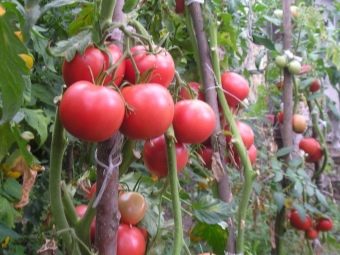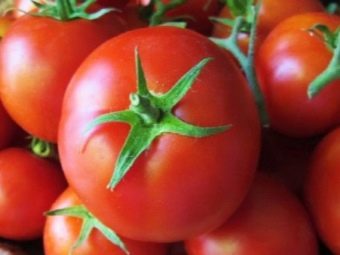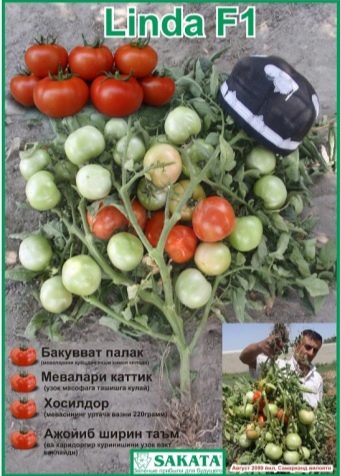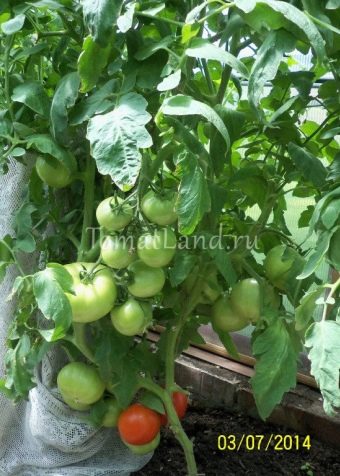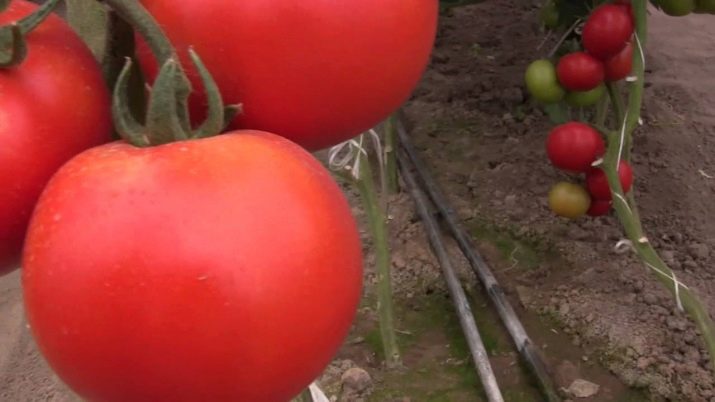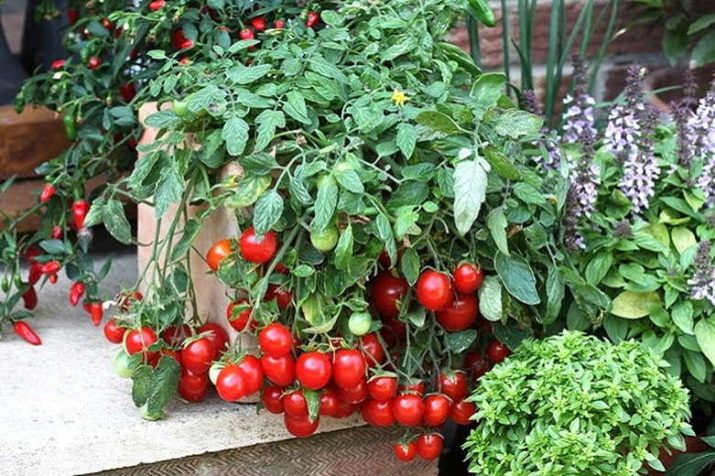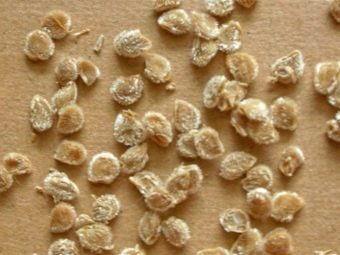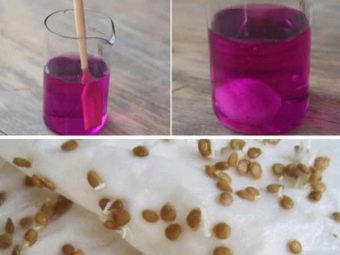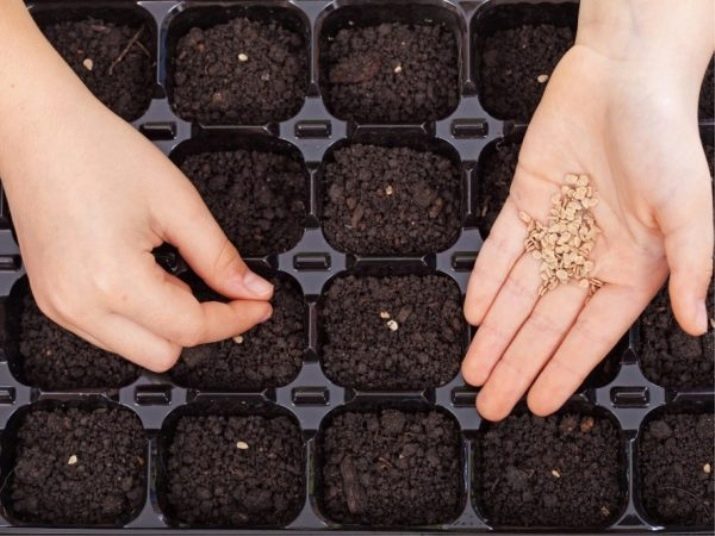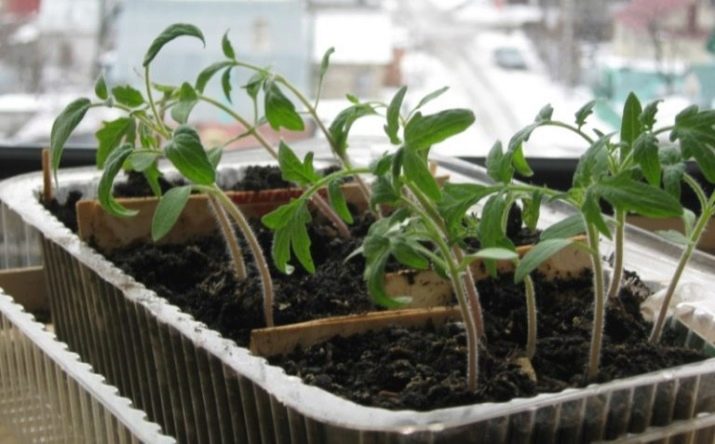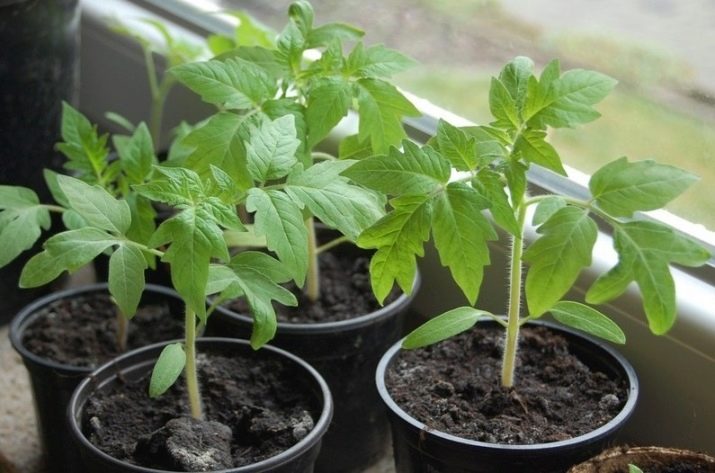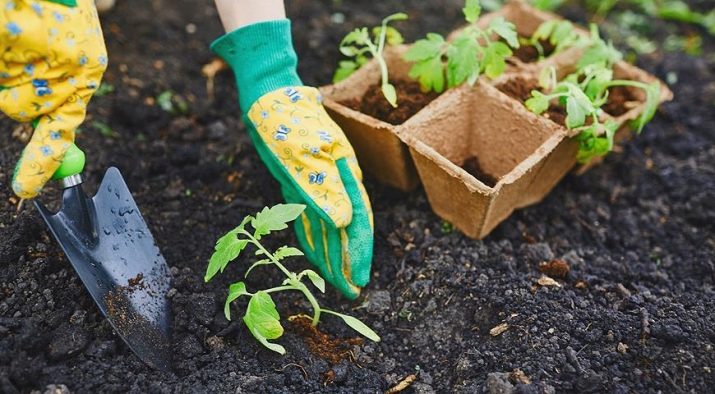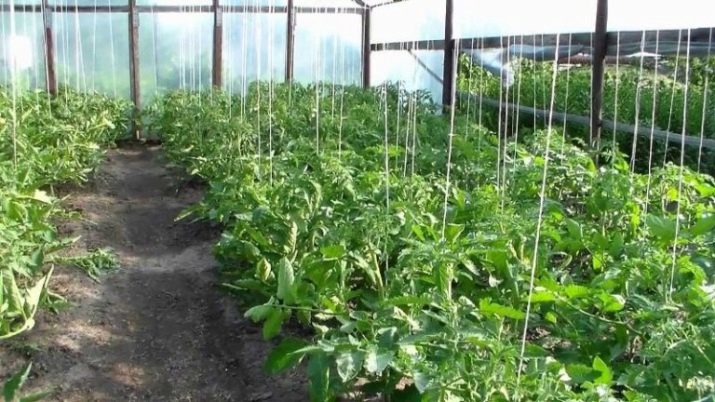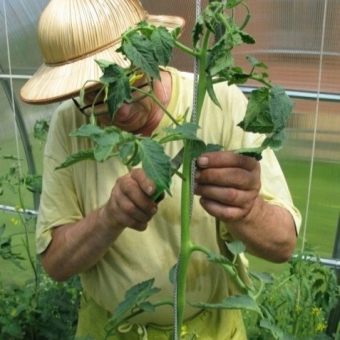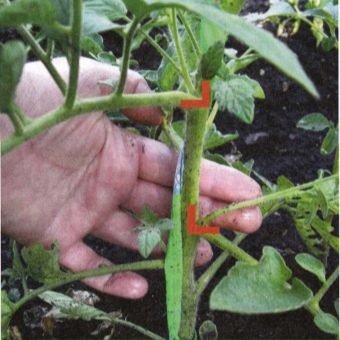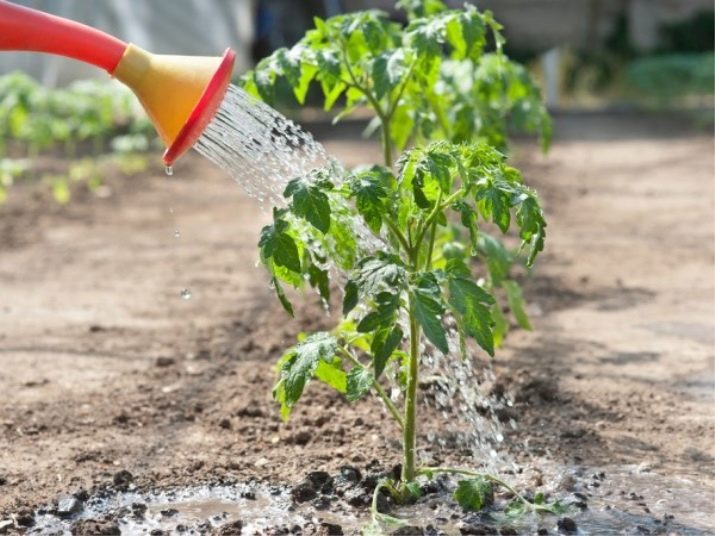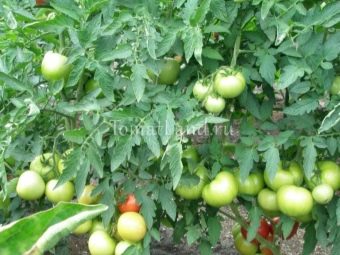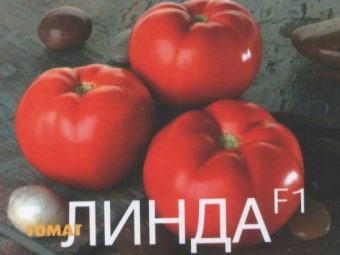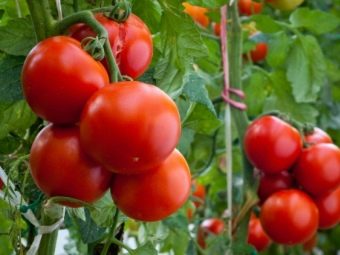Features hybrid varieties of tomatoes "Linda F1"
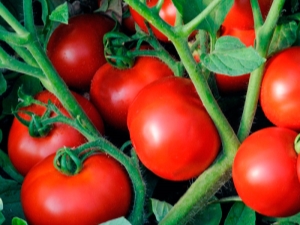
Like all hybrid varieties, the Linda F1 tomato is distinguished by unpretentiousness, good germination rates, rich harvest and genetic resistance to the most common diseases.
Special features
Tomato "Linda F1" is a hybrid, the result of the work of Japanese breeders. Refers to mid-season varieties of determinant type. Aging occurs at 100-105 days after the appearance of seedlings. The height of the bushes reaches 50-80 cm, while they do not need pinching the crown. Designed for cultivation in the open field.
They are characterized by a powerful stem, a moderate amount of leaves of a light green color typical of the culture. The characteristic of the variety also includes a reference to the genetic resistance of tomatoes to the most common for solanaceous diseases, including verticillosis, Fusarium.
It is resistant to negative environmental influences, demonstrates high yields, even in adverse years. Despite the fact that it pretty well withstands the decrease in temperature, the best yields are achieved, however, at elevated (not lower than + 22-25 ° C) temperatures and long light days.
Fruits ripen in medium size, their weight is from 80 to 115 g. Ripe tomatoes are bright red both from the inside and outside, the unripe ones have a light brown tint. The shape of the fruit is round, they have a dense skin, rather fleshy, have an attractive presentation. It tastes sweet and sour.
As well as many mid-season varieties, they are optimal for salads and fresh use, besides, they are suitable for preservation, and it is better to use them in blanks as a whole. For transportation it is recommended to pluck fruits brown.
In connection with similar names, the hybrid “Linda F1” is often confused with the “Linda” tomatoes, which are a culture for home cultivation on the windows and balcony. Balcony variety "Linda" is a variety of cherry tomatoes and is suitable for year-round cultivation.
Landing features
Planting tomato is carried out by seeds. Like any hybrid, "Linda F1" is an annual plant, so you should not plant seeds obtained from last year, even a very good harvest.
Seed preparation for this variety is standard for this crop. Empty, defective and moldy seeds should be excluded.
To improve their germination and increase resistance to infections of an adult plant allows the preliminary disinfection of seeds and their treatment with growth stimulants. For disinfection, you can prepare a weak solution of potassium permanganate, taking it in an amount of 1 g per 1 liter of warm water. In this solution, seeds should be kept for 20-25 minutes, then rinsed under running water.
The next step is to place seeds for 12 hours in special biostimulants. After that, they can be planted in boxes or special cups for seedlings. You can also pre-germinate seeds, placing them in a warm and humid environment, and only then put in the ground.
The best soil for tomatoes, this variety is not an exception, are fertile mixtures of black soil, peat and sod land. You can also make a small amount of sand. The soil is also disinfected before use with a solution of potassium permanganate or by roasting in the oven.
The bottom layer of boxes or cups for seedlings should be lined with fine expanded clay or gravel, which will act as drainage. The earth fits tightly, slightly compacted to eliminate air pockets destructive for the seeds.
2-3 grains are planted on a glass. In the boxes, at first, make grooves at a distance of 7-10 cm from each other, after which seeds are lowered in them with a step of 2-3 cm. Sprinkle with a layer of no more than 1.5-2 cm.
Moisturize the soil before and after sowing. Then the containers are closed with plastic wrap and placed in a temperature of at least + 25С. Seedlings need moderate watering, better drip method.
It is important that the light day was at least 10-12 hours. To ensure it allows the use of special lights, which is set above the tomatoes at a distance of 30 cm.Lamps are recommended to be included in the dark predawn hours, as well as after sunset. On a rainy gloomy day, it is also best to use a lamp.
After the seedlings spitting, the film is removed, and the air temperature drops to + 18 ... 20С. At the stage of the formation of two or three leaves produce a pick.
When plants reach 10–15 cm in height, and the weather conditions allow them to be planted in the ground, they are “relocated”. A week and a half before this event, the tomatoes are re-quenched, bringing to the street first for 15-20 minutes a day, then for 2-3 hours.
When planting tomatoes in the ground should be guided not so much by calendar values as by weather conditions. It is possible to replant bushes only on condition that there are no night frosts, and the soil temperature is at least + 15-18C.
If you plant bushes in cold soil, it will cause them to take long, and in some cases - death.
Care
For planting tomatoes in the ground soil is prepared in the fall, digging it and making humus. The depth of the holes is no more than 25-30 cm, the width between them is about 40-50 cm. It is not recommended to plant more than 4 bushes per 1 m2, since more heap planting adversely affects their productivity.
Tomatoes should be planted in dry cool weather, preferably in the evening. Transplantation is carried out by the method of transshipment, it is important to strive to keep the root system as much as possible whole.
Despite the fact that the variety is intended for planting in the ground, in regions with short or cool summer it is better to plant tomatoes in the greenhouse to get a good and timely harvest. It is advisable to disinfect the soil and the greenhouse surface before planting by wetting with a hot solution of potassium permanganate.
Despite the small size of the bush, they still need to be tied up. After the appearance of the fruit may require additional garter. The number of tomatoes on a bush is quite large, they are more like a bunch, so there is a high probability that the bush will break.
For tying up, you can not use natural materials, they provoke rotting of the trunk. Preference should be given to synthetic analogues.
It is recommended to form a bush in one, as a last resort - in two trunks. In this case, you first need to form one trunk, and after the appearance of 3-4 brushes on it, form a second trunk. If you ignore this recommendation and start growing the bush in two trunks at once, this will slow down its development.
Be sure to regularly produce pinching of the bushes, as well as pick off the lower leaves. Passing involves removal of the lateral processes until they reach a length of more than 5 cm.
If you do not have time to disrupt a large process, then it should be removed with the preservation of a small hemp. This will avoid infection of the stem. Pasynkovan need to produce on a sunny day, so that the resulting "abrasions" quickly delayed.
Pasynki, by the way, can be placed in water, and rooted after the roots appear.
Watering should be moderate. This variety can withstand a slight drying of the top layer of the earth, but it tolerates excessive irrigation rather poorly. Immediately after watering, the soil should be loosened to improve the penetration of air under the ground and prevent stagnation of moisture.
Tips experienced gardeners
Reviews of gardeners allow us to conclude that the tomato tolerates aridity and high temperatures. However, with strong heat, its leaves can burn. In this regard, it is recommended to choose well-lit areas for growing bushes, but avoid or minimize exposure to direct sunlight.
Also, gardeners celebrate the friendly appearance of the crop and its rather high speed of ripening. To reduce the period of redness of the formed tomatoes allows the application of magnesium-based feedings. Also, during the fruiting period, the plant needs an increased potassium content.
Taste qualities of Linda F1 variety tomatoes are highly appreciated by most users, although there are reviews that the tomato flavor is not very pronounced, and therefore it is better to use it for harvesting. However, these statements are subjective and can not fully characterize the taste characteristics of the variety.
On the cultivation of tomatoes "Linda F1", see the following video.

